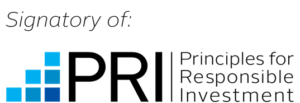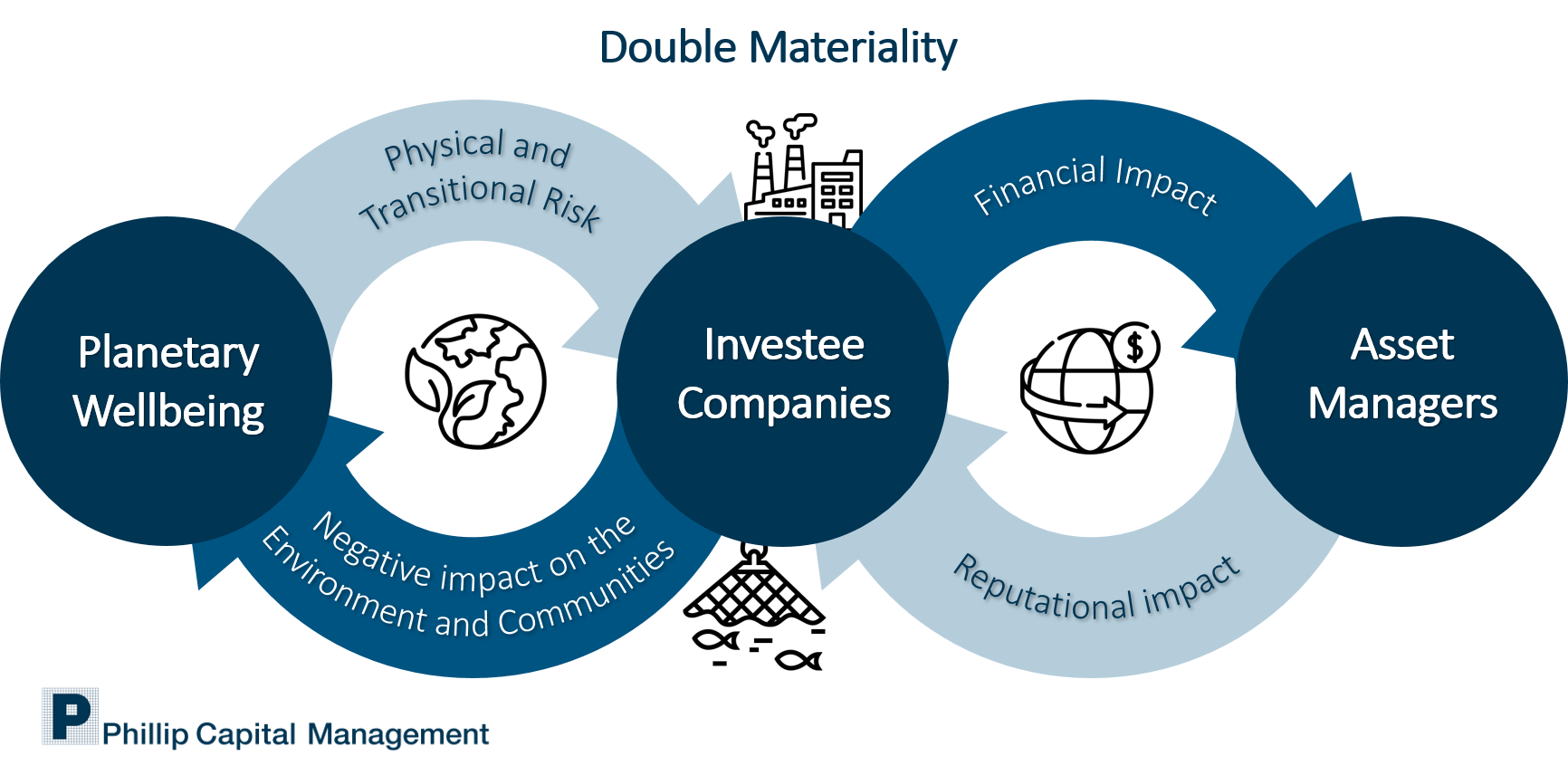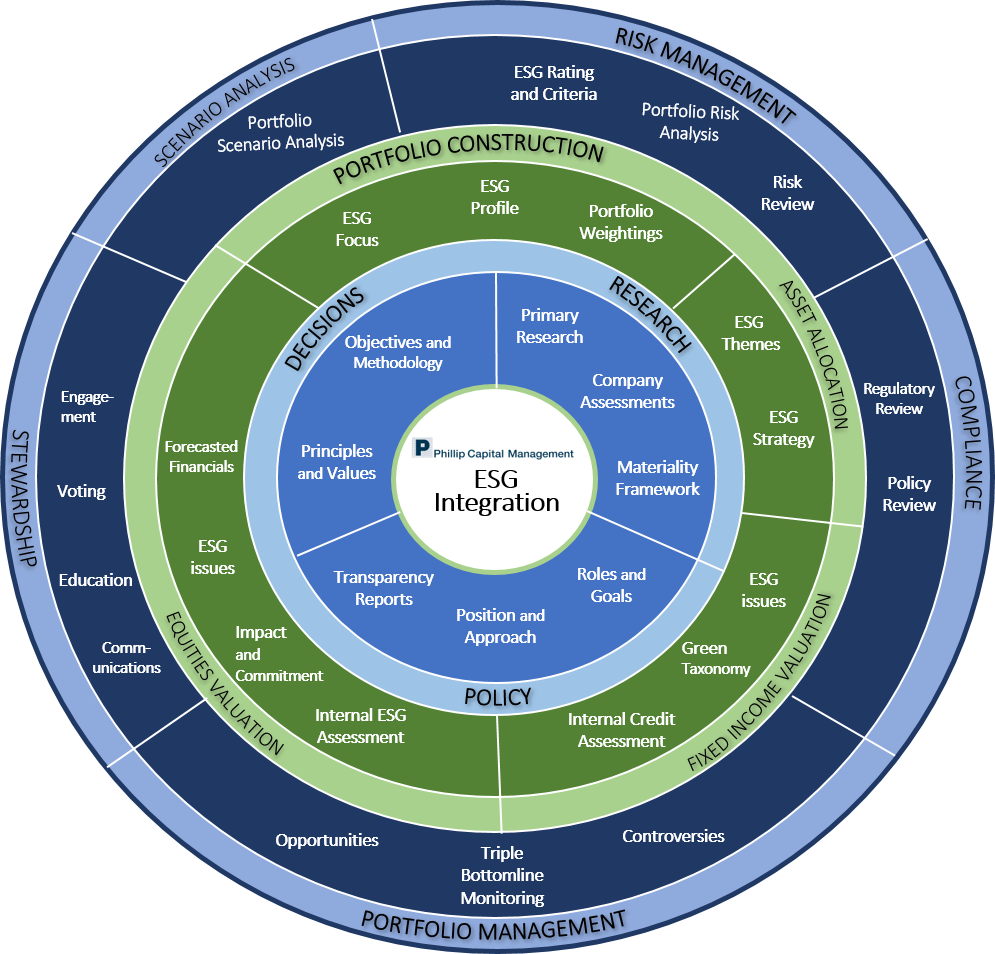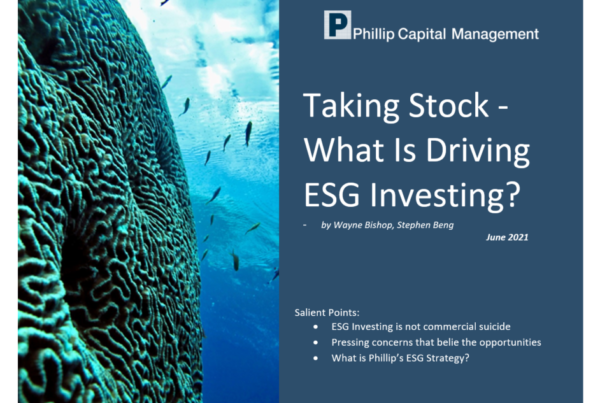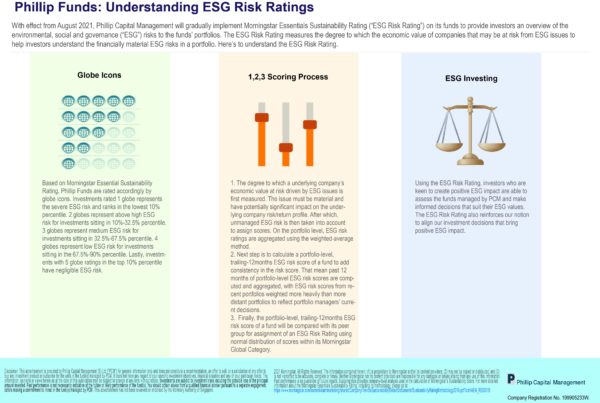- Sustainable Investing Position
- Sustainable Investing Philosophy and ESG Integrated Investment Framework
- ESG Research Process
DRIVING POSITIVE CHANGE
Sustainable Investing Position
By incorporating ESG considerations to our investment decisions, we are able to protect capital, apply our responsible investment principles to purposeful investments with safe returns, and achieve our fiduciary, societal, and environmental responsibilities.
Through our capital flow, we aim to reinforce countries and companies that are contributing and transitioning to a low-carbon and circular economy in socially-just and nature-positive ways. We seek rewards from those who are well-positioned to succeed financially from their commitments to the global climate, biodiversity, and sustainable development goals that ultimately drive necessary change for a more sustainable economy.
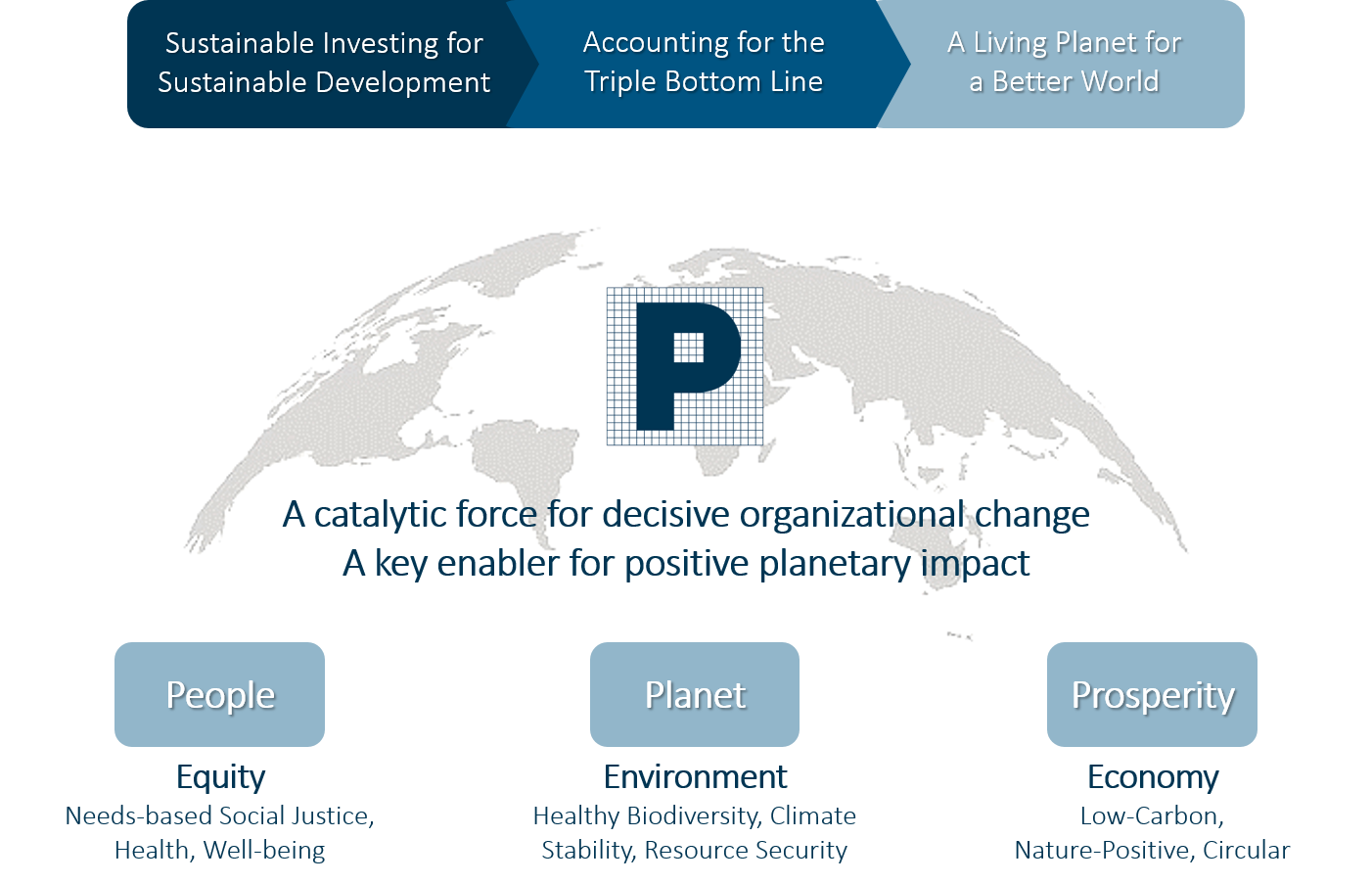
FOCUSING ON WHAT MATTERS
Sustainable Investing Philosophy
Our position compels us to assess double materiality impacts and adopt an inclusionary approach to sustainable investing while taking the necessary precautions.
We focus on what matters – a Strong Return on Investment, a Sustainable Environment and Economy.
ESG Integrated Investment Framework
Investment decisions:
Our ESG-integrated research, capital allocation, and risk management processes are built upon guiding principles and standards.
As a UN-supported PRI signatory, we address ESG issues by incorporating them into our policies and processes so as to reap long-term investment rewards that benefit people and the planet.
As TCFD supporters and TNFD Forum members, our assessments take guidance from their frameworks, above baseline industry-specific reporting standards and scientific research.
Together with compatible ESG data providers, the PCM ESG Framework supports our sustainable investing strategies, helps account for the triple bottom line and meets our intended outcomes.
ESG Integrated Investment Process
Our principles guide our investment decisions.
- We REVIEW inadequate efforts to take necessary action on risks material to the company’s performance and long-term survival.
- We REINFORCE transitions and contributions to a low-carbon and circular economy that seek just benefits for communities and greater gains for biodiversity.
- We REWARD commitments to global climate, biodiversity and sustainable development goals that lead to a sustainable economy.
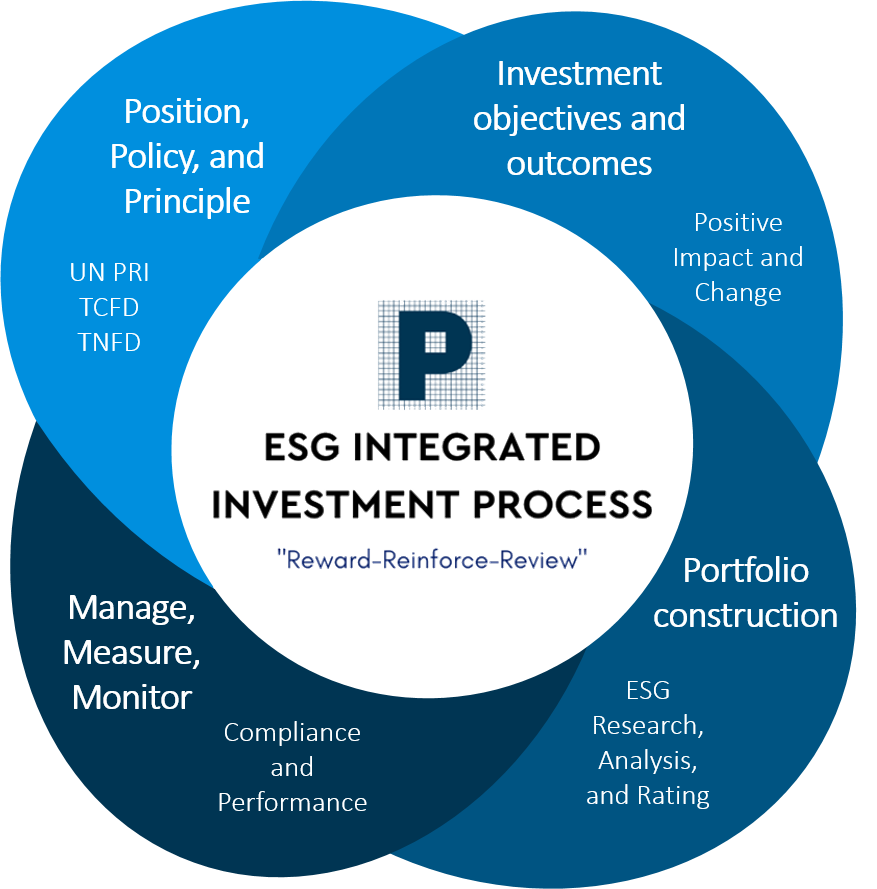
VALIDATING COMPANY VALUE
ESG Research Process
Our research process enables us to advance materiality by focusing on ESG factors most important to each business, and deepen coverage beyond third-party analytics. Our ESG research objectives take guidance from our Sustainable Investing Position and Philosophy.
- Objective 1: Managing ESG Risks
- Objective 2: Mitigating Negative Externalities
- Objective 3: Measuring Positive Change and Impact
We believe industry-specific transition is necessary in order to meet the global goals for climate, nature and sustainable development. We partner with all sectors that meet our ESG criteria, and approach carbon-intensive and resource-dependent entities with precautionary measures and in accordance with our ESG Policy.
Targets and goals that can be adequately measured and managed allow us to monitor performance and change over time. We take reference from scientific bodies, such as IPCC and IPBES, and the Global Goals set within the Paris Agreement, the Global Biodiversity Framework and the SDGs.
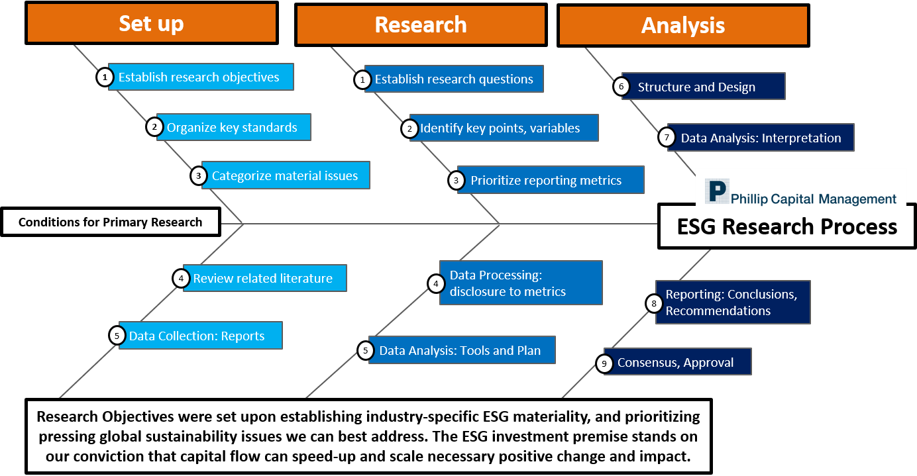
Both external and internal ESG ratings are updated at least once a year. The ESG team conducts regular monitoring of events that may affect portfolio assets. ESG ratings may be adjusted accordingly.
Our ESG analytics prioritizes fundamental research using primary sources of ESG data at the issuer level to measure our Sustainable Investing objectives. For validity and where data is lacking, we employ carefully curated sources of secondary data and our Engagement Plan and Policy, where data is verified, progress is monitored and improvement is affirmed.
Methodologies:
1. Carbon Risk Rating: based on a Carbon Performance Score (a metric for the current carbon-related performance of a company as well as its capabilities to seize climate-related opportunities and manage its industry-specific climate risks in the future) and Carbon Risk Classification (a classification of a company’s individual exposure to climate change risks based on its specific industry assignment and business activities).
2. ESG Corporate Rating: provides relevant and forward-looking environmental, social, and governance (ESG) data and performance assessments. Rooted in a holistic and gradual understanding of materiality, companies are assessed against a standard set of universal ESG topics as well as additional industry-specific topics. The materiality approach covers both material sustainability risks as well as adverse impacts on society and the environment. Drawing on an overall pool of more than 700 indicators, ISS ESG applies approximately 100 social, environmental, and governance related indicators per rating, covering topics such as employee matters, supply chain management, business ethics, corporate governance, environmental management, eco-efficiency and others. Differentiated weighting scenarios ensure that the topics most material for a given business model are duly accounted for.
3. PCM ESG Rating: based on 3 research objectives; Managing ESG Risk, Mitigating Negative Externalities, Measuring Positive Change and Impact. Each research objective includes Environmental, Social, and Governance metrics financially material to the industry and where relevant, specific to the assessed entity. Each Research Objective assesses risks and opportunities across domains that address social injustice, health and breached planetary boundaries such as climate change, biodiversity loss, and pollution. PCM ESG Ratings follow a strict scoring system relevant to each of the three objectives, then assessed across investment recommendation levels based on research objective threshold scores, and key action indicators (level of action taken, contribution/transition to the green economy, commitment to their own targets and to the global goals.
Our Sustainability Events & Content
________________
Driving the spirit of sustainability through engagement
Lastest ESG Insights
Memberships & Associations

